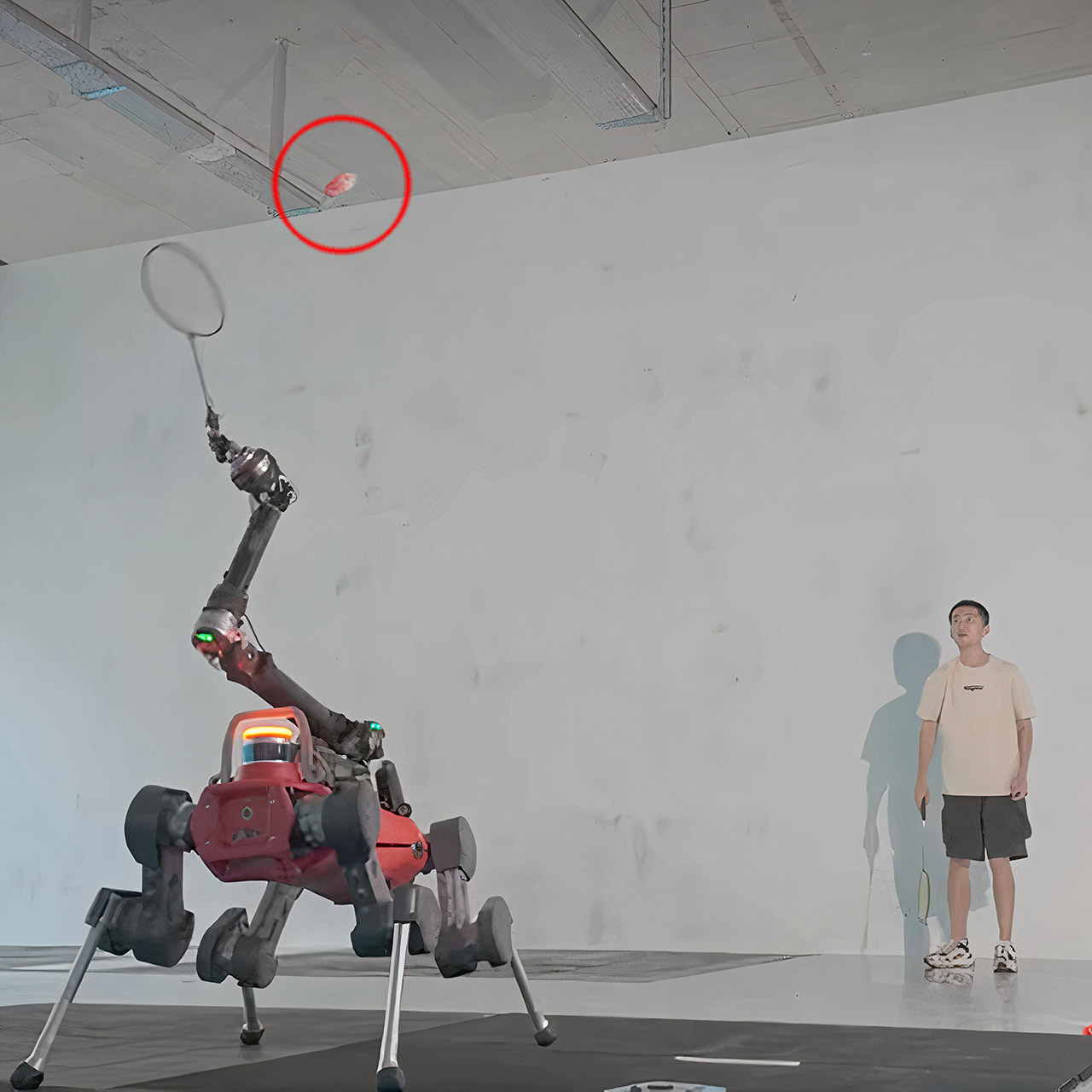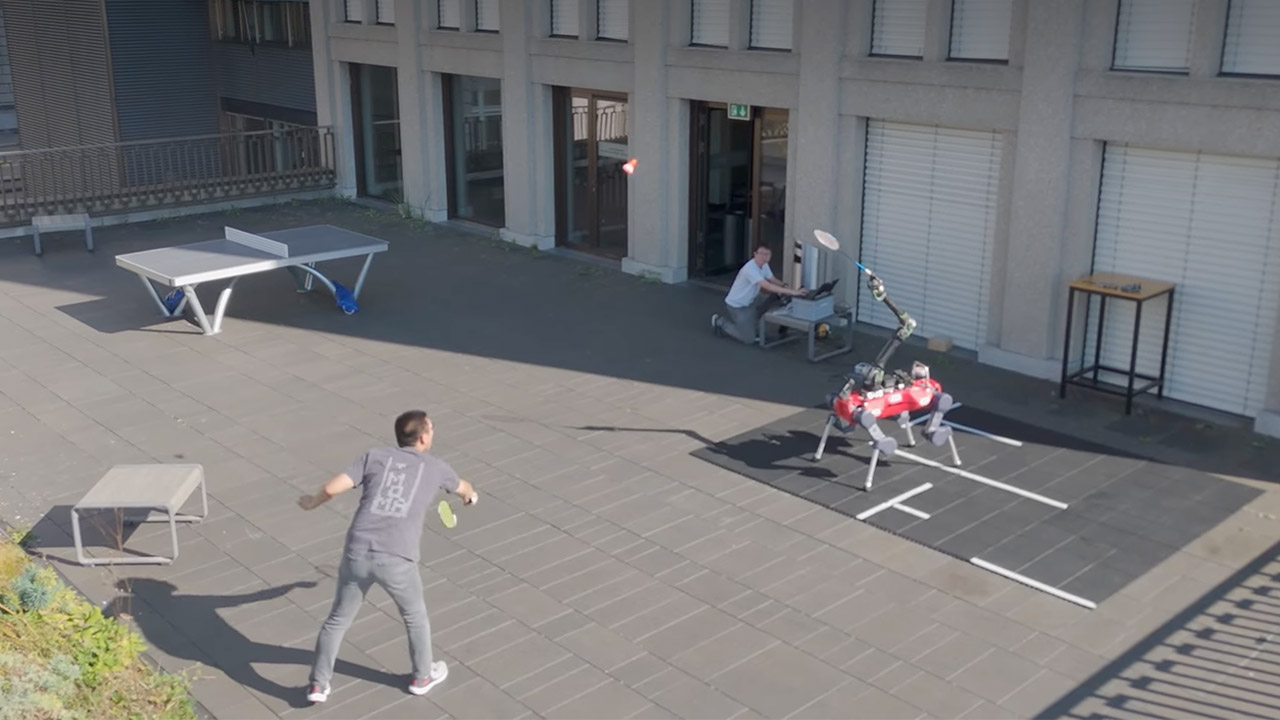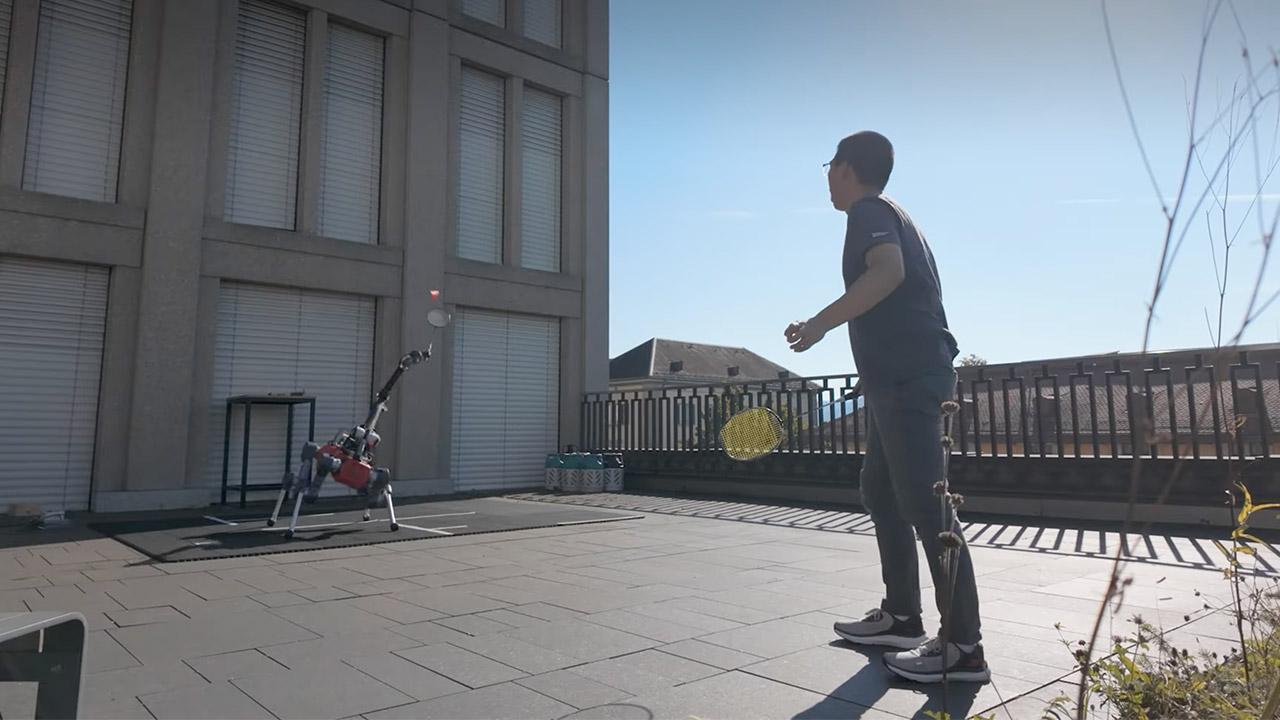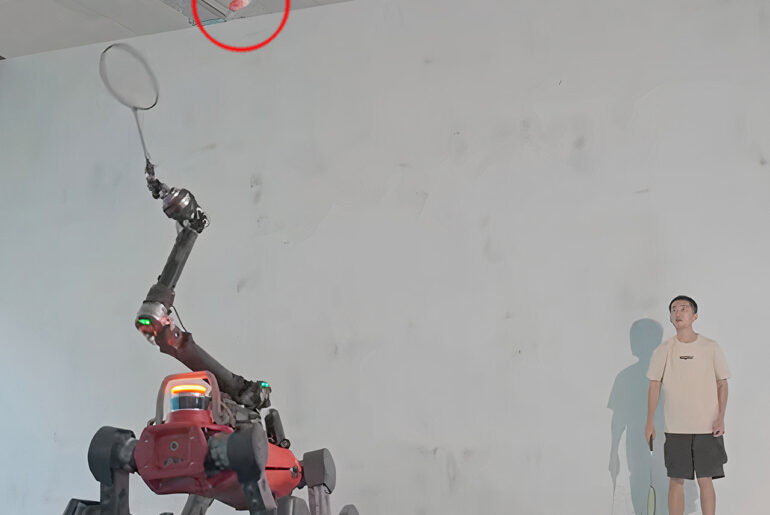
A four-legged robot called ANYmal enters the badminton court, racket in hand, ready to rally. ETH Zurich has developed a system that lets this mechanical marvel track a shuttlecock, predict its path and swing with precision.
ANYmal, a quadruped robot developed over years at ETH Zurich, already knows its way around tough terrain. It’s climbed rocks, hopped over obstacles and even done parkour. Now it’s learning to play badminton, a sport that requires split second decisions and coordinated movement. The researchers equipped ANYmal with a multi-axis arm holding a racket and two cameras to track the shuttlecock’s flight. Those cameras feed data to a control system that calculates where the birdie will land and plots the robot’s next move.
- 【Regarding Returns】Please note that our custom-made products are NON-RETURNABLE and NON-EXCHANGEABLE!!! We highly recommend that you fully...
- 【Meet the Go2 Robot Dog】The wounderful toy for beginners and experienced robot enthusiasts alike! With basic gaits like walking and running, the...
- 【Intelligent Obstacle Avoidance】Go2 is equipped with Unitree's self-developed 4D LiDAR sensor L1, which has a 360x90° hemispherical...
What makes this so cool is the application of reinforcement learning, a technique where the robot trains itself in a virtual world before entering the court. In simulations ANYmal plays thousands of rallies, learning how to position itself and swing the racket without tipping over. This digital practice translates into real world talent, so the robot can intercept shots like a novice human player – imagine a 7 year old with a solid swing. The technology doesn’t just react, it anticipates, adjusting the robot’s posture and arm to meet the shuttlecock at the optimal angle.

Balance is the key here, as badminton involves running across a court while staying steady enough to hit a perfect shot. That’s a big challenge for a four legged robot. ANYmal’s cameras and sensors work with its motor controls to keep it upright as it lunges for a return. The reinforcement learning algorithm fine tunes this synchronization, so the robot doesn’t stumble while chasing a fast moving target. Watching it move you can’t help but be impressed how it balances agility and stability, a testament to years of engineering refinement.

This badminton playing robot builds on ANYmal’s previous capabilities, as it was originally developed to inspect industrial sites for gas leaks. That means it’s good at exploring difficult environments, dealing with uneven terrain and climbing over obstacles. Adding badminton to its repertoire shows the versatility of its basic mechanisms. The same technology that lets it climb a hill or balance on rubble now lets it volley a shuttlecock, pointing to a future where robots could aid in sports training or even participate.
The only drawback is the $150,000 price tag. ANYmal won’t be showing up at your local rec center anytime soon. For now, it will likely end up at top training facilities or research labs where its human-like movement will be useful. The ETH Zurich team sees ANYmal as an aid to athletes, as a tireless sparring partner that can drill shots with machine precision. Beyond sports this research is pushing the boundaries of what robots can do in dynamic and unpredictable environments.
[Source]










